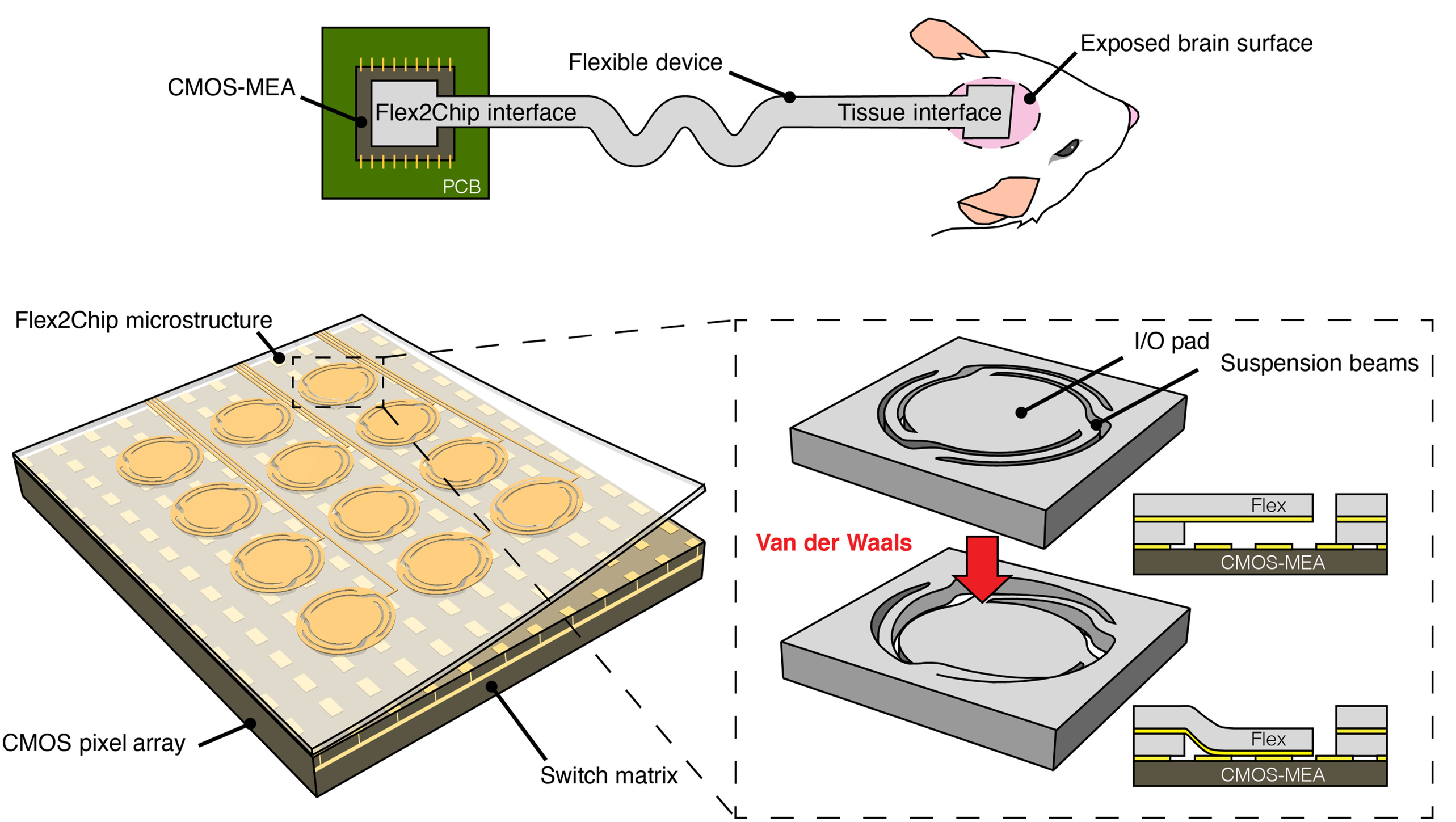CMOS-based highly scalable flexible neural electrode interface
Electrode connector based on an ultra-conformable thin-film electrode array was developed that self-assembles onto silicon microelectrode arrays enabling high channel counts at a millimeter scale. Interconnects were formed using microfabricated electrode pads suspended by thin support arms.


Thin-film flexible devices that can conform to the curvilinear surface of the brain are a promising technology to capture cortex-wide spatiotemporal dynamics. Microfabrication and advanced lithography methods have enabled the creation of thin-film arrays with hundreds to thousands of recording sites. However, a key bottleneck still is the connectorization between electrodes and external circuitry. E. Zhao of the group of N. Melosh at Stanford - in collaboration with our group - developed an electrode connector based on an ultra-conformable thin-film electrode array that self-assembles onto silicon microelectrode arrays enabling multi-thousand channel counts at a millimeter scale. The interconnects are formed using microfabricated electrode pads suspended by thin support arms. Capillary-assisted assembly drives the pads to deform toward the chip surface, and van der Waals forces maintain this deformation, establishing Ohmic contact. With the arrays extracellular action potentials were successfully measured ex vivo, and micrometer-scale seizure propagation trajectories could be resolved in epileptic mice. The paper was published in external page Science Advances (E. T. Zhao, et al., "A CMOS-based highly scalable flexible neural electrode interface", Science Advances 2023, 9, Article: eadf9524).